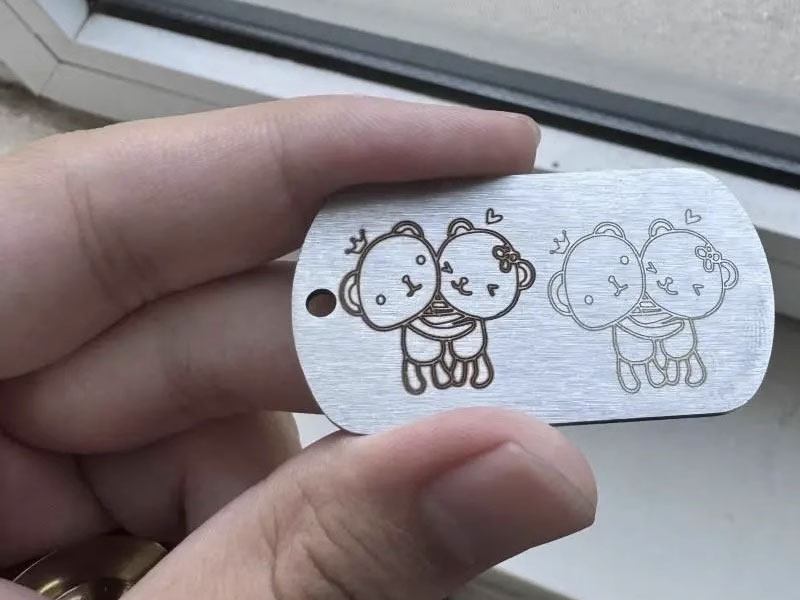Laser engraving is a high-precision processing technology that is widely used in a variety of materials, especially anodized aluminum. Anodized aluminum is favored for its excellent corrosion resistance and beautiful surface finish. In order to obtain the best engraving results, it is important to choose the appropriate file format and laser settings.
This article will take a deep dive into the best formats and techniques for лазерная гравировка on anodized aluminum.

What is Laser Engraving
Laser engraving uses a high-energy laser beam to process the surface of a material, melting or evaporating the material locally at high temperatures to form the desired pattern or text. Anodized aluminum is an electrochemically treated aluminum material that forms a hard and wear-resistant oxide film on its surface, which makes it very suitable for laser engraving.
Advantages of Anodized Aluminum
Коррозионная стойкость: Anodized aluminum has excellent corrosion resistance and is suitable for outdoor and harsh environments.
Beautiful appearance: A variety of colors and surface treatments are available, making anodized aluminum visually attractive.
Good processability: Its surface hardness is high and can withstand high-intensity laser processing.
Какой формат подходит для лазерной гравировки на анодированном алюминии
1.Vector Graphics Format
- SVG (Scalable Vector Graphics): Widely used in web and print design, supports transparency and gradients.
- AI (Adobe Illustrator File): Format generated by professional design software, suitable for complex graphic design.
- DXF (Drawing Interchange Format): Commonly used in CAD software, suitable for engineering and architectural design.
Преимущества:
- High clarity, no distortion whether enlarged or reduced.
- Can easily edit and modify the design.
2.Raster Image Format
- Raster images are images composed of pixels, common formats include:
- JPEG: Suitable for photos, but compression may cause quality loss.
- PNG: Supports transparent background, high quality, but large file size.
Notes:
- Use high-resolution (at least 300 DPI) raster images to ensure clear engraving details.
- Because raster images will distort when enlarged, they are not recommended for designs that require precise dimensions.
3.Design Software
- Adobe Illustrator: Powerful vector graphics editing software suitable for professional designers. CorelDraw: User-friendly vector graphics software with comprehensive functions and easy to use.
- Inkscape: Open source software suitable for people with limited budget but need vector design.
How to Set up Laser Engraving
1.Select Laser Type
- CO2 laser: suitable for non-metallic materials, can also effectively process anodized aluminum. Usually the power is set at around 30 watts.
- Fiber laser: better for metal materials, providing higher contrast and accuracy. Can mark directly without additional processing.
2.Laser Settings
CO2 -лазер
Power: 70%-100%
Speed: adjusted according to the required depth, generally faster speeds can achieve better contrast.
Resolution: at least 500 DPI to ensure clear details.
Fiber laser
Power: 70%-90%
Frequency: adjusted according to the marking style, generally 200-500 kHz works best.
Заключение
Choosing the right file format and laser settings is critical to successful engraving on anodized aluminum. By understanding the characteristics of different formats, mastering the relevant techniques, and conducting sufficient testing, you can achieve the ideal engraving results. I hope this article provides valuable information and guidance for your project!
Вопросы и ответы
Will laser engraving damage the anodized layer?
Laser engraving will not damage the anodized layer if the settings are correct, but too deep can affect its durability.
How to deal with anodized aluminum with different colors or coatings?
Different colors may affect the contrast, so it is recommended to test before actual engraving to determine the best settings.
How to protect the finished product after laser engraving?
A clear coating or protective film can be used to increase durability and prevent scratching or fading.
